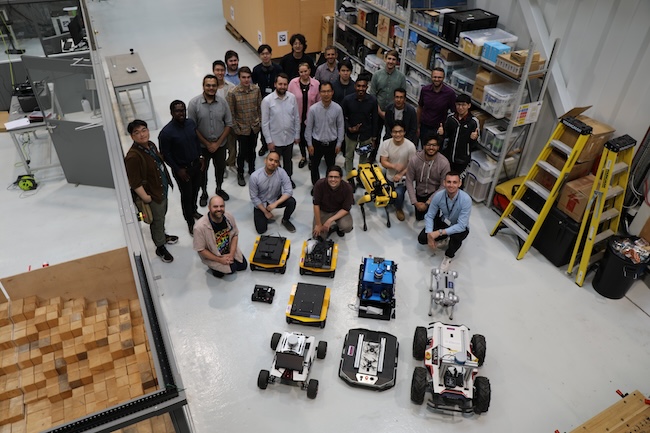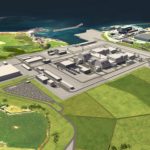Sector - Software & Technology
SMuRFS to make nuclear decommissioning safer

Nuclear power stations could be decommissioned in the future with the help of teams of autonomous robots known as the SMuRFs, scientists have suggested.
Engineers from University of Glasgow, University of Manchester, Bristol Robotics Laboratory and Heriot-Watt University are behind the development of the SMuRF system, which is short for Symbiotic Multi-Robot Fleet.
The system provides a seamless method to enable wheeled, four-legged and airborne robots to collaborate and complete tasks that could be difficult or harmful for humans to undertake on their own.
Instead, a single human supervisor can remotely observe the actions of the robots as they share sensor data between themselves, combining their abilities to achieve results far beyond the reach of a single machine.
SMuRFs could offer authorities, regulators and industry a safer, faster method of monitoring nuclear facilities, as well as opening up new opportunities for the maintenance of engineering infrastructure in challenging environments like offshore wind power platforms.
In a paper published in the journal IET Cyber-Systems and Robotics, the researchers outline how they deployed the SMuRF in a practical demonstration at the Robotics and Artificial Intelligence Collaboration (RAICo) facility in Cumbria.
RAICo is a collaboration between the UK Atomic Energy Authority (UKAEA), Nuclear Decommissioning Authority (NDA), Sellafield Ltd and the University of Manchester.
During the demonstration, the SMuRF successfully completed an inspection mission in a simulated radioactive storage facility containing some of the challenges found in real nuclear power decommissioning environments.
The robots’ ability to collaborate is the result of a sophisticated computer system developed by the researchers, which they call a ‘cyber physical system’ or CPS.
Combining the robots’ abilities allowed them to complete a series of tasks often applied to radiation monitoring around nuclear sites known as post-operational cleanout.
The robots collaborated to map the environment, creating a 3D digital twin of the space using their onboard sensors, which was supported by further mapping from an aerial drone piloted by a human operator.
Boston Dynamics’ Spot fetched tools for closer scans using its flexible arm, while wheeled robots Scout and CARMA mapped radiation levels across the testing environment. The CARMA robot successfully detected a simulated spill of radioactive liquid underneath a waste barrel, a detection that could help ensure proper containment and cleanup in a real-world environment.
Daniel Mitchell of the University of Glasgow’s James Watt School of Engineering is the paper’s corresponding author. He was recently named as the Institution of Engineering and Technology’s Rising Star 2023 in recognition of the impact of his research.
He said: “The robots we programmed and designed in this prototype SMuRF each have their own unique abilities and limitations, as well as their own operating systems.
“During the deployment of the SMuRF at RAICo, we were able to show how well the robots can work together and how the digital twin we built can provide remarkable situational awareness for human operators.
“That could make them ideally-suited for the challenges of working in potentially hazardous environments such nuclear inspection and decommissioning.
“Humans will still be required to oversee and direct the robot fleet, but their high level of autonomy could help keep people safe by allowing them to interact with the robots from their desks instead of visiting work sites.”
If you would like to read more stories like this, then please click here
Related Articles
More Software & Technology News
- New laws will strengthen cyber defences for essential public services
4 Dec 25
UK government has introduced the Cyber Security and Resilience Bill to Parliament.
- £115M lost to cyberattacks
28 Nov 25
Small construction firms lose over £115 million to cyberattacks annually, making it the UK’s third-most
- COWI partners with University of Strathclyde to trial environmental DNA for sustainable infrastructure
18 Sep 25
COWI has partnered with the University of Strathclyde to trial the use of environmental DNA (eDNA)






